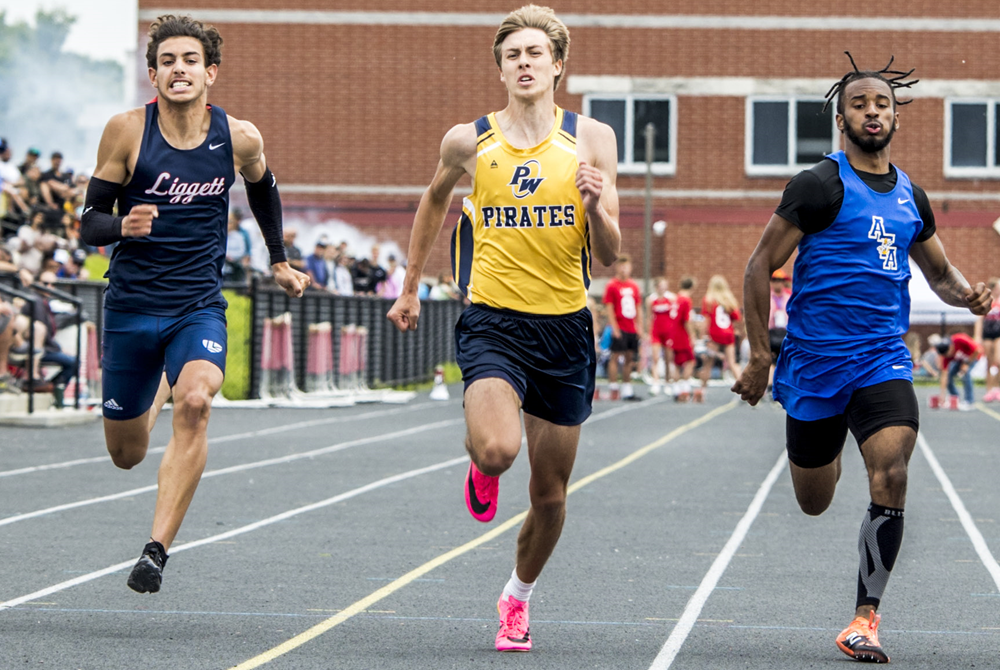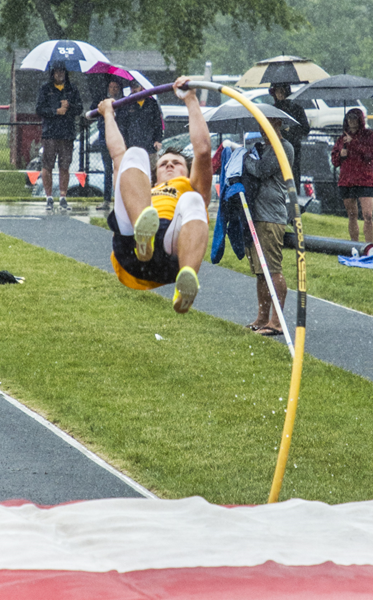
Keep on Coaching
February 1, 2013
By Geoff Kimmerly
Second Half editor
A few weeks ago, I finally got my first chance this season to watch a friend coach his basketball team. After guiding some others at the lower levels, this is his first time running the varsity – something he wasn't sure he wanted to do with a 1-year-old just learning to walk, but a challenge he ended up taking on to the benefit of all those involved.
Simply put, he’s good. I've seen a lot of teams and a lot of coaches over the past 15 years, and although I wouldn't know much of what to do if I were walking the sideline, I felt pretty qualified in telling him I was impressed – even if he didn't buy that I was offering an unbiased opinion. The best news is he’s gone from not sure about this a few months ago to talking about next season.
We know, at least anecdotally, that coaching continues to get more challenging. The time commitment has grown substantially to make running a program a year-round endeavor in a lot of sports at a lot of schools.
That commitment – especially for coaches with children of their own – was a main reason referred to in a New Haven Post-Chronicle story Saturday that noted 23 football coaching openings in Connecticut at one point this offseason. That state has 146 football teams – meaning roughly 15 percent will have new leaders this fall.
And that got me thinking about my friend, about how glad I am he’s given this a shot, and how I've seen so many others either not do so, or not stick around long despite having some pretty nice success.
A study published last winter in Interscholastic Athletic Administration magazine – a product of the National Interscholastic Athletic Administrators Association – noted some predictable results of a study that sought to determine the biggest challenges faced by first-year high school coaches.
The toughest according to the study was balancing the demands of coaching and teaching, experienced by nearly half the respondents – 98 percent of which coached high school teams and 81 percent of which are teachers.
The next six reasons all were noted by at least 30 percent of those in the study – personal fatigue, securing community support, securing and caring for facilities and equipment, parental contact, keeping non-starting players motivated, dealing with schedule interruptions and motivating athletes to achieve consistent, peak performance.
Nothing there is earth-shaking, and most if not all of these challenges are faced by high school coaches regardless of how long they've been in the field. But I got a little more perspective from some of the 32 items that ranked as least challenging to the first-year leaders – keeping in compliance with state and league regulations, dealing with substance abuse issues, teaching sport skills and creating a positive team atmosphere – things that seem most important, and yet appear to be easiest to do. I’m not sure what that tells us – but I think it tells us something.
Click to check out the entire three-page breakdown of the study, plus the researchers’ recommendations to remedy some of what first-year coaches face.
Giving back to Saginaw
I love reading about high-level athletes – like a star-studded group of alums from Saginaw – giving back to where they got their starts.
Pittsburgh Steelers star LaMarr Woodley made a big impact before the start of this school year by donating $60,000 to cover all participation fees for athletes in his former school district. The Saginaw News’ Hugh Bernreuter writes today about how Woodley (Saginaw High), the Philadelphia 76ers’ Jason Richardson (Saginaw Arthur Hill) and former Oakland Raiders standout Stu Schweigert (Saginaw Heritage) have combined to give more than $865,000 back to their home communities.
Bernreuter also mentions the non-monetary contributions of the Golden State Warriors’ Draymond Green (Saginaw High) and former Indianapolis Colts receiver Blair White (Saginaw Nouvel).
Click to read more about it.
Quote(s) of the Week
While rifling through more papers on my desk, I found an article from the Washington Post from Sept. 2011 titled “How high school sports save our schools.” I was drawn to it in part because I spent more than a decade in a newsroom, and it was a piece by a reporter covering education who instead of reporting on school boards and the like, delved into the importance of interscholastic athletics to education as a whole.
He spoke of how participation continues to grow even as resources dwindle, and of data supporting that extracurriculars like sports are more effective than academic classes in teaching leadership, teamwork, time management and “other skills crucial for success in the workplace.” Later, he mentioned a study noting that those who participate in extracurriculars earned more a decade later.
Click here to read the entre piece. These passages struck me most.
“Coaches might be the only faculty members still allowed by our culture and educational practice to get tough with students not making the proper effort. They have the advantage of teaching what are essentially elective non-credit courses. They can insist on standards of behavior that classroom teachers often cannot enforce because the stakes of dismissing or letting students drop their courses are too high. …
“Students do better in activities they choose. If we provide more of them, led by committed adults … that can make a difference. We know the bad news about education. Dropout rates are high. Achievement scores are stagnant. But sports participation is going up, despite pressure to cut it back. Let’s cheer about that and look for a way to draw in more students.”

Smith Sets Tone as Multi-Talented Pewamo-Westphalia Ascends Again
By
Dean Holzwarth
Special for MHSAA.com
June 1, 2024
KENT CITY – Trevor Smith set the tone early for the Pewamo-Westphalia boys track & field team Saturday at Kent City.
The junior sprinter earned a narrow win in the 100 to collect early points that would prove beneficial in the Pirates’ pursuit of their latest Lower Peninsula Division 3 championship.
“It was a big win right away in the beginning, and it helped put us in a good position,” Smith said. “It was a big emotional shift, and it was unreal.
“I didn’t really expect it, but it was a big help toward our team with points. I just missed winning last year, so to come back and win it meant a lot.”
Pewamo-Westphalia kept its early advantage throughout and hung on in the end to capture the title. The Pirates, last year’s runners-up, recorded 49 points to clip second-place Clare by four points. Detroit Edison was third with 32 points.
P-W senior Gavin Nurenberg repeated in the shot put (60-02), while senior Collin Farmer added a pair of top-4 finishes in the distance events.
“Our boys had a really nice season, but this was always the focus from Day 1,” Pirates coach Scott Werner said. “We felt we had the pieces in place when we got out of Regionals, and we were just excited to attack the day.
“We are the type of program where we are good in quite a few events. We don't rely on one person. We set the tone early with unexpected points in the 3,200 relay, and it built from there.”
 Farmer finished runner-up in the 3,200 and fourth in the 1,600.
Farmer finished runner-up in the 3,200 and fourth in the 1,600.
“There are not a lot of teams that have good guys in the field, sprints and distance, so I think that brings a lot of peace to the team,” Farmer said. “We knew that we could trust each other, and not one person had to take control.”
Senior Dalton Brown also provided a lift with a personal record en route to a third-place finish in the shot put.
“I challenged each of the separate groups to go out and score a minimum of 15 points,” Werner said. “We had a plan and an approach for every single event, and they trusted the process and executed at the highest level. I’m proud of them.”
Clare made a late push with a strong showing in the relays, while also receiving a boost from senior Brad White. He cruised to a win in the 800 with a new personal-best time and also was part of the winning 1,600 relay.
“Honestly, I didn't expect this,” White said. “I came into today pressure-free. I’ve already accomplished everything I could ever want in a season, and I'm just as happy as I can be to come out here and do something special, especially in my last high school race. I’m proud of my team and my PR.”
North Muskegon senior Jerry Wiegers repeated in the 400 by edging Geoffrey McBurrow of Detroit Edison. Wiegers also won the 200.
“There was a lot of pressure (to repeat), and I was worried on the whole ride here that I was going to screw up and I was going to have to hand the title to someone else,” Wiegers said. “But when I finally passed the finish line and I won, I was like, ‘I did this again, in my final year in high school.’ It was a good way to cap off my career.”
Coloma senior Boden Genovese (1,600) and Grayling senior Drew Moore (3,200) won the distance races, and Napoleon senior Holden Van Poppel (110) and Elk Rapids junior Max Ward (300) were hurdles champions. Standish-Sterling (400), Edison (800) and Traverse City St. Francis (3,200) also won relays. Lawton junior Mason Mayne (discus), Ovid-Elsie junior Tryce Tokar (pole vault) and Clare sophomore Conan Weeks (long jump) were other field event winners. Grosse Pointe Woods University Liggett senior Jake Juip (100 and 200), Montague junior Wyatt Fairchild (400) and Perry senior Alec Chapman (shot put) won the adaptive event championships.
PHOTOS (Top) Pewamo-Westphalia's Trevor Smith, center, edges Dearborn Advanced Technology's Cobey Cureton and University Liggett's Santino Cicarella, among others, in the 100 on Saturday. (Middle) Ovid-Elsie's Tryce Tokar attempts a vault amid the rainy conditions. (Click for more from Jamie McNinch/RunMichigan.com.)

